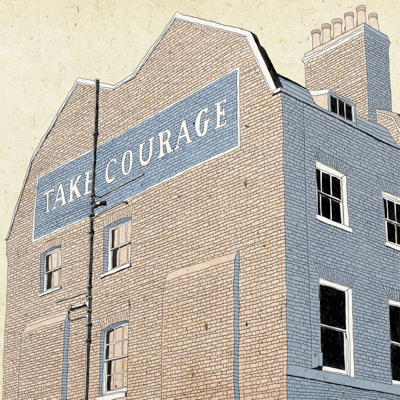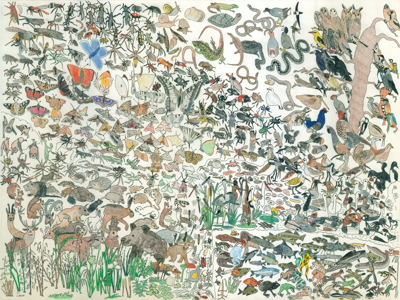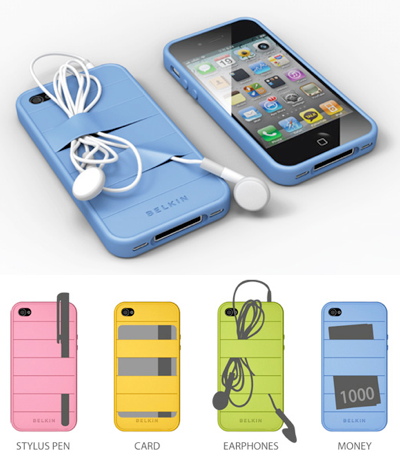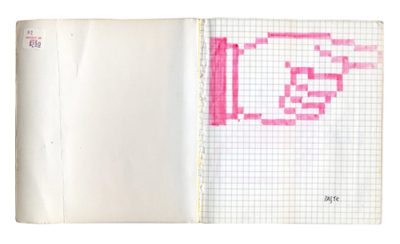Khoi Vinh's Blog, page 168
December 12, 2011
What I Learned When I Started a Design Studio
Earlier in the year, I wrote a bit about the design services industry in two blog posts: first, I wrote "The End of Client Services" in July, which outlined my thoughts on why the best interaction design is done outside of the studio/agency model. Then in August I followed up with "In Defense of Client Services," which expands a little bit on why I believe services is such a difficult way to earn a living as a designer. I had meant to write a third post, but getting Mixel out the door got in the way. Over the past several days I was finally able to find the time to hammer out this follow-up.
Actually, I've been making notes for this blog post all year long, because it was ten years ago that I co-founded an interaction studio here in New York City, partnering with some colleagues from a previous employer. I stayed with the studio for four years, and I learned a lot in that time. Building that business significantly changed my outlook on the design industry, but I haven't written too much on why. A decade later seems like the right opportunity.
What still strikes me the most about that experience was how little my former partners and I understood at the outset about what it takes to build a successful services business. In the years since, I've met lots of designers who have either founded or had the ambition to found studios or agencies of their own. Most of them, it seems to me, are laboring under misapprehensions very similar to the ones that hobbled my former partners and myself.
So here are a few of the key lessons that I learned from co-founding my own design studio. The usual caveats apply, of course, in that everything about business is contextual, and so your mileage my vary.
People
Far and away, the biggest lesson I took away from co-founding a design studio was that almost nothing matters more than people. How well a team works together, through good times and bad, day in and day out, is a bigger determining factor in building a successful business than the contracts you win, the work that you do, the press coverage you get or even the money you make.
The way to form a good team is to gather people of complementary talents and temperaments and unite them under a single vision. By contrast, my former partners and I started our studio primarily because we were thrown together by circumstance — in the fall of 2001 and in the aftermath of 9/11, with no one hiring, we had almost no other choice but to form a company of our own. But our disparate attitudes, approaches and visions for the business inevitably led to strife, and before too long I could no longer answer the question "Do you like working with these people?" with a "yes." If you're going to undertake the hard work of building a company, the answer to that question should always be a resounding "yes." Life is too short for it to be otherwise.
Clients
You cannot succeed in design services unless you really believe in your clients and your client's products. Just as it's essential to enjoy working with the people you form a company with, working with clients that you like is essential too. I liked some of the clients I worked with, and I flatly disliked many of the others.
I did my best work for the former, and I did a disservice to the latter, most of whom had hired us to help further businesses that I felt no passion for, or was outright skeptical of. For years, I thought that my disinterest was immaterial, that I was such a talented designer that I could do a good job for anyone. But before long it became apparent to me that unless I was fully bought into a client's vision, my work would always be subpar. If you're trying to build a design studio based on a reputation for doing phenomenal work, taking on assignments from clients you don't believe in is a waste of everyone's time.
Client Work vs. Products
I've know lots of people who got into services thinking that they can use the income from clients to bankroll their own product ideas. That is not an impossible scenario — it's been done before more than a few times, and it's a beautiful thing when it happens. But it's very, very difficult to pull off. To do services, you need to wake up in the morning with a different approach to life from the way you wake up in the morning to do products, and only a few people have the skill — and stamina — to juggle both at once.
If I were to start a new studio, I would square with myself — and my partners — that we'd be in the business of providing services to our clients, period. It's so hard to do a good job for clients, and so hard to build a sustainable business in client services, that I wouldn't want the creative and emotional distraction of trying to build products of our own, too.
Vision
The funny thing about design services is that it's relatively easy to get started, but very tricky to make work. Lots of companies need design help in some form, so if you win one or two clients — which is actually fairly easy to do — suddenly you have a business with real revenue. The really challenging part is whether you can turn a handful of jobs into a financially lucrative client roster that consistently brings you creatively satisfying work. That's a lot harder.
What is required more than anything is vision — articulating your goals and creating a plan to achieve them. Even more important is to make sure that the vision is mutually held by all of your partners. It's hard to underestimate how valuable it is to agree, up front, on how big you want the company to grow, what kind of clients you want to win, how long you expect the company to survive, how you might exit the business — and even how hard you want to work each day. It's easy to disagree about the answers to these questions at the beginning, but it's incredibly stressful to disagree about them after the business has started to assume liabilities.
Marketing
Most clients, when they hire a design studio, take the attitude that the studio is lucky to work with them, that they selected them from an plentiful pool of design companies bidding on their business. To many clients, design studios are, in a sense, interchangeable. So if you don't want to do something the client's way, if you don't want to let them integrate their staff on your team or hand over your development files mid-way through a project or make certain changes to your approach, well they can easily hire the next studio to do it exactly the way they want it done instead.
This is a deadly position for a design studio because it essentially commoditizes the studio's value. It forces the studio into a mode where it's essentially selling units of its time and not its unique creative expertise. The only solution is to upend this equation, and create the circumstances under which clients instead feel fortunate that a studio is willing to work with them. It's a critical difference, because it informs every event within the relationship between the two parties.
How do you make this happen? There's only one way, and it's not to do good work, which unfortunately is the answer that many designers prefer. Good work is a core part of what makes a successful studio, to be sure, but even more important is marketing yourself — relentlessly. It's my belief that at least a third of the investment and/or revenue of any new design studio should be devoted to getting great press coverage, creating attention-getting publications, running advertisements, sponsoring events — in short, creating insatiable excitement around the very idea of the studio. The only way to do great projects on the terms that you want is to make the possibility of working with you incredibly special to a prospective client.
Saying No
At one point during my tenure at my old studio we were talking about strategy and one of my former colleagues recounted all of the many new business opportunities then available to us (the market was doing very well) and followed that summary with a declaration that "We cannot afford to say no to any of them."
Few things struck me as so fundamentally wrong and inconsistent with my vision as that statement did. Even then, what I had already learned running that business was that saying "no," was incredibly important, that turning down bad clients and bad projects — the ones that were outside of our expertise, outside of our budget, outside of the kind of work that would make us happy — was the only way to avoid the trap of working long and hard on miserable projects. This doesn't just go for 'established' studios; due to the time, effort and opportunity cost of saying yes to bad projects, I believe it's also a surefire way to make sure young studios never get to say yes to good projects. In the services business, sometimes "no" is the most powerful, effective and beneficial tool that you have.
To follow me on Twitter click here.

December 8, 2011
Why You Should Move That Button 3px to the Left
Over at the newish blog Design Staff, Braden Kowitz makes a cogent case for why fit-and-finish is important enough for a designer to fight for, even in the face of indifference from peers on a product team (a situation that I've encountered many times throughout my career). Kowitz lays out a few useful arguments and offers helpful tips that might help other designers convince engineers, product managers and others that such attention to detail is not just "design for design's sake." Read the full blog post here.
By the way, in addition to having a great name, Design Staff is an excellent addition to the design discourse. Its impressive roster of writers have built many well-known and widely used digital products, and its mission — "Design Staff is dedicated to helping startups design great products" — is laudable. Since starting Mixel and immersing myself in the startup ecosystem, I can attest that many startups struggle mightily with the kinds of design issues covered here.
To follow me on Twitter click here.

December 7, 2011
OmniGraffle Feed Sponsorship
OmniGraffle is the easiest and most elegant way to create website wireframes, process flows, organization hiearchies, and, frankly, almost anything.
Rely on OmniGraffle to create beautifully simple documents to share with anyone. Even through an TV.
Created for both Mac and iPad, OmniGraffle's smart shapes, stencils and contextual styling elements gracefully guide you from rough outline to pixel perfection.
For ages 5 to 105, and available here.

December 5, 2011
Me at Forty x Forty
Over the weekend I turned forty. Actually, not long before that I was twenty years old, and then all of a sudden it was Saturday night and I was celebrating four decades on this planet.
Forty is a kind of milestone no matter what. But it was extra special for me because I got an amazing gift. Laura corralled several dozen of my friends to each draw, paint, photograph, collage or diagram portraits of me. She pulled this off conspiratorially, so I had no idea at all that this nontrivial creative project was happening behind my back for almost two months. When she presented it to me Saturday, at a birthday dinner with some friends, I was utterly shocked. You can see the portraits over here.
Please indulge a little bit of sentimentality here, because I was overcome with emotion as I flipped through the pages. It reminded me that I have amazing people in my life, and how lucky I am in that respect. It also reminded me that somehow, in spite of nearly four decades of clumsily ambling my way around this planet, I managed to find the right person to spend my life with. Being reminded of that fact was the best possible gift I could have gotten.
To follow me on Twitter click here.

December 2, 2011
Two Obsessive Drawings
I happened across these two wonderfully detailed drawings in my RSS reader today. This first one is by a third-year illustration student at Middlesex University.
Here's he other one, by the artist David Barth.
Just sharing.
To follow me on Twitter click here.

November 30, 2011
The Glif and Glif+
The iPhone 4S has an amazing camera. This is undisputed. What the iPhone lacks, however, is a tripod thread for mounting it to a tripod. Enter the Glif.
The Glif is a small and simple accessory for mounting your iPhone 4 or 4S to any standard tripod. It also acts as a little kickstand to prop your iPhone up for watching movies, using FaceTime, etc.
And now, we are offering Glif+, a deluxe Glif package. It comes with Ligature, a keychain loop for always keeping your Glif handy, and Serif, an additional attachment to keep your iPhone super secure in extreme situations. We are also offering the +Pack, for those of you that already own a Glif and just want the add-ons. Both are available for preorder now, and will ship in 1-2 weeks.
With the holidays fast approaching, the Glif makes a great stocking stuffer. Available now at StudioNeat.

The Glif and Glif+ Feed Sponsorship
The iPhone 4S has an amazing camera. This is undisputed. What the iPhone lacks, however, is a tripod thread for mounting it to a tripod. Enter the Glif.
The Glif is a small and simple accessory for mounting your iPhone 4 or 4S to any standard tripod. It also acts as a little kickstand to prop your iPhone up for watching movies, using FaceTime, etc.
And now, we are offering Glif+, a deluxe Glif package. It comes with Ligature, a keychain loop for always keeping your Glif handy, and Serif, an additional attachment to keep your iPhone super secure in extreme situations. We are also offering the +Pack, for those of you that already own a Glif and just want the add-ons. Both are available for preorder now, and will ship in 1-2 weeks.
With the holidays fast approaching, the Glif makes a great stocking stuffer. Available now at StudioNeat.

Elasty
I've tried several different cases for my iPhone 4 in the year and a half that I've owned it. My favorite has been this faux camera design made of real wood from my friends at Photojojo but it was admittedly a bit bulky and it eventually cracked, as wood naturally does. I keep coming back to the the Speck Pixelskin which is lightweight, reliable and not too bulky, yet very homely-looking.
This morning I came across this design concept that looks like it might nail that elusive intersection of form and function. It's called Elasty and it was created by designer Yoori Koo. It's a silicone bumper fitted with elastic strips which allow you to stash your headphones, pens, cards etc. on the back of the phone.
At the moment it's only a beautifully-rendered idea, not a shipping product, but it did win a design award from tech accessories manufacturer Belkin, so maybe it'll be available for sale soon. Find out more here.
To follow me on Twitter click here.

November 29, 2011
Elvis Costello: Steal This Record
Next month sees the release of Costello's "The Return of the Spectacular Spinning Songbook," a boxed set of live recordings of Costello and his band The Imposters playing songs from his his lengthy discography. The set retails for US$202.66, a price high enough to earn Costello's own ire. In this blog post, he explicitly advises his fans not to buy it, recommending instead the Louis Armstrong boxed set "Ambassador of Jazz." I've been a fan of Costello's since forever, so I'm happy to see he still has a bit of his old pugnacity — as well as his sense of showmanship. Read the full post here.
To follow me on Twitter click here.

November 28, 2011
Susan Kare's Original Macintosh Icon Sketches
Everyone knows that designer Susan Kare was responsible for the seminal icons in the original Macintosh some two and a half decades ago. This blog post, which is reproduced in part as an introduction to Kare's , shows us something that we haven't been privy to until now: the original, hand-drawn sketches for many of the icons that are now a permanent part of our visual language.
It's a nice write-up. Read the entire entry here.
To follow me on Twitter click here.

Khoi Vinh's Blog
- Khoi Vinh's profile
- 5 followers








